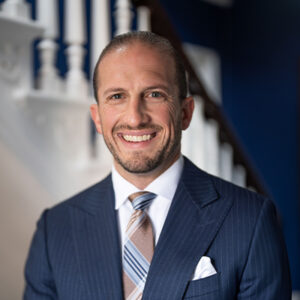Liability determines who is legally responsible for causing harm in both personal injury and criminal law. Understanding how liability works is essential to proving fault, assigning damages, and protecting one’s rights after an accident or criminal allegation.
Liability defines who must pay for injuries, property damage, or other losses caused by negligent or unlawful behavior. In New York, it can take many forms depending on the type of case, civil or criminal, and the circumstances involved.
What Does Liability Mean?
Liability refers to a person’s or entity’s legal responsibility for their actions or omissions. When someone’s conduct causes harm, they may be held liable to the injured party through civil law or the state through criminal law.
In personal injury cases, liability typically arises from negligence, meaning the person failed to act with reasonable care. In criminal law, liability stems from intentionally or recklessly breaking a law.
To establish civil liability, an injured party must prove four key elements:
- Duty: The defendant owed a duty of care to the plaintiff.
- Breach: The defendant violated that duty through negligence or wrongful conduct.
- Causation: The defendant’s actions directly caused the injury.
- Damages: The plaintiff suffered measurable harm or losses.
If all four elements are proven, the defendant can be held liable for the resulting damages.
Types of Liability
Different types of liability can apply depending on the situation.
In personal injury cases, the most common include:
- Negligence liability: Arises when someone fails to use reasonable care and causes harm.
- Strict liability: Applies even without proof of negligence, often in defective product cases.
- Vicarious liability: Holds employers or others responsible for the actions of those under their control, such as employees or contractors.
- Premises liability: Involves injuries that occur on someone’s property due to unsafe conditions.
- Professional liability: Arises when professionals like doctors, lawyers, or accountants fail to meet the required standard of care.
In criminal law, liability may be direct (for committing the offense) or accessory (for helping or encouraging the crime).
Understanding which type applies is the first step in determining who is financially or legally responsible.
Liability in Personal Injury Cases
In personal injury claims, liability determines who must compensate the injured party. Most cases are based on negligence, where a person or company failed to act reasonably under the circumstances.
Examples include:
- A driver running a red light and causing a crash
- A property owner failing to remove ice from a sidewalk
- A business ignoring known safety hazards
- A manufacturer producing defective equipment
Each of these situations involves a failure to meet a duty of care, resulting in harm.
Shared Liability Under New York’s Pure Comparative Negligence Rule
New York follows a pure comparative negligence rule. This means that even if you were partly at fault for your injury, you can still recover damages. If you share responsibility, your award is simply reduced by your percentage of fault.
For example, if you were found 25% responsible for a car accident and your total damages were $100,000, you could still recover $75,000.
This rule ensures that victims aren’t barred from recovery just because they share some blame.
No-Fault Insurance and Liability in Car Accidents
New York is a no-fault state, which means that drivers first turn to their own Personal Injury Protection (PIP) coverage for medical expenses and lost wages after a car accident, regardless of who caused the crash.
However, if your injuries meet New York’s “serious injury” threshold, you can step outside the no-fault system and pursue a liability claim against the at-fault driver.
Examples of serious injuries include:
- Broken bones
- Significant disfigurement
- Permanent limitation of the use of a body organ or member
- Substantial disability lasting at least 90 days
Once that threshold is met, you can seek compensation for pain and suffering, future losses, and other damages from the responsible party.
Liability in Criminal Law
While civil cases focus on financial compensation, criminal liability determines whether someone can be punished by the state. A person found criminally liable may face fines, probation, or imprisonment.
For example, a driver who causes a fatal crash while intoxicated could face both civil liability (for damages) and criminal liability (for violating DUI laws).
Criminal liability requires proof beyond a reasonable doubt, a much higher standard than in civil cases, where the burden is based on a preponderance of the evidence.
Proving Liability
To hold someone liable in a personal injury case, your attorney must present strong evidence linking the defendant’s actions to your injuries.
Useful forms of evidence include:
- Police or accident reports
- Witness statements
- Photos or video of the scene
- Medical records
- Expert testimony (such as accident reconstruction or medical analysis)
- Employment or maintenance logs, in cases involving businesses or commercial vehicles
Evidence helps demonstrate both causation and damages, ensuring that liability is supported by facts rather than speculation.
Statutes of Limitation for Liability Claims in New York
If you’ve been injured or lost a loved one, timing is critical. New York law imposes strict filing deadlines. Personal injury claims must be filed within 3 years. Wrongful death claims have to be filed within 2 years.
Failing to file within these deadlines typically results in losing the right to pursue compensation, so it’s important to act as soon as possible.
How an Attorney Can Help Establish Liability
Determining liability often requires extensive investigation and legal analysis.
A personal injury lawyer can:
- Identify all potentially liable parties
- Gather and preserve evidence before it disappears
- Work with experts to prove causation
- Handle negotiations with insurers or opposing counsel
- Prepare the case for trial if necessary
Because every case is unique, legal guidance is often the key to proving fault and maximizing recovery.
Liability defines who must answer for harm caused by negligence or unlawful conduct. Understanding the nuances of civil and criminal liability (including comparative fault and no-fault insurance) is essential to protecting your rights in New York.
If you were injured by someone else’s negligence, Passalacqua & Associates, LLC can help hold them liable. Contact us today at (315) 500-6425 for a free consultation with a Syracuse personal injury lawyer.



